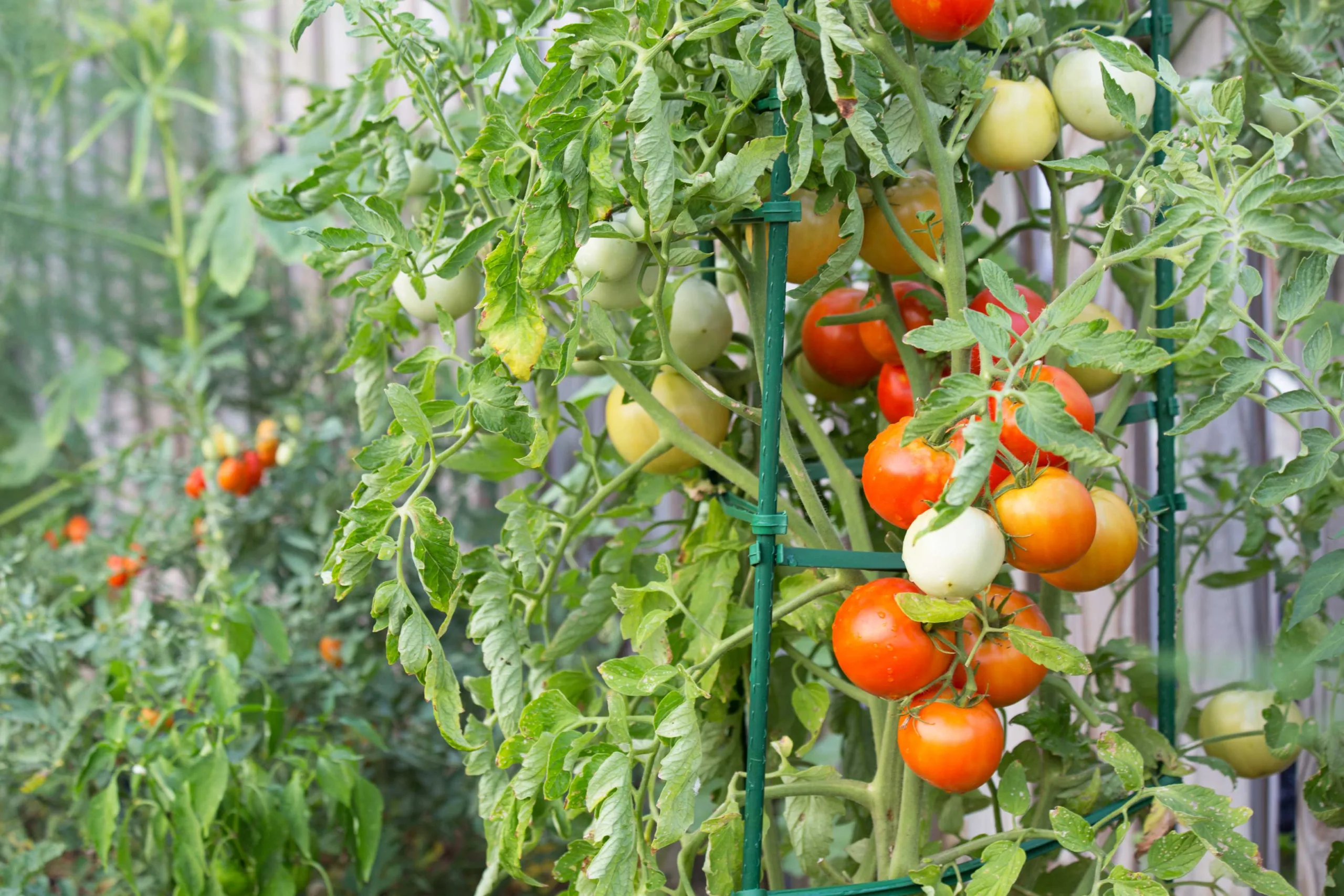Introduction
Tomatoes are one of the most rewarding crops to grow, but they need a little help standing tall. Staking tomato plants is a crucial step to ensure healthy growth, prevent breakage, and maximize harvests. For gardeners, the big question often arises: should you use DIY stakes or opt for store-bought ones? In this article, we’ll explore the pros and cons of both options, helping you decide which method suits your garden best.

stakes for tomato plants
Why Staking Tomato Plants is Essential
Preventing Damage and Maximizing Growth
Tomato plants are vulnerable to bending or breaking under the weight of their fruit. Staking provides the support they need to grow upright, preventing damage and allowing the plant to focus its energy on producing more fruit.
Improving Air Circulation
Proper staking increases airflow around the plant, reducing the risk of fungal diseases and keeping your tomatoes healthy and vibrant.
Easier Harvesting
With staked plants, tomatoes are easier to see and pick. This not only saves time but also minimizes the chance of stepping on or damaging plants during harvest.
DIY Stakes for Tomato Plants
Common Materials for DIY Stakes
Many gardeners enjoy crafting their own stakes using materials such as bamboo, wooden dowels, PVC pipes, or even repurposed items like old broom handles.
Advantages of DIY Stakes
- Cost-Effectiveness: DIY stakes are often made from materials you already have, making them a budget-friendly option.
- Customizability: You can tailor DIY stakes to the exact height and width needed for your plants.
- Eco-Friendliness: Repurposing materials reduces waste and aligns with sustainable gardening practices.
Disadvantages of DIY Stakes
- Durability Issues: DIY stakes may not last as long as store-bought options, especially if they’re made from wood that rots over time.
- Time Investment: Creating DIY stakes requires time and effort, which might not appeal to busy gardeners.
Store-Bought Stakes for Tomato Plants
Types of Store-Bought Stakes
Store-bought options include durable metal stakes, spiral stakes designed to guide plants upward, and sturdy cage systems that provide all-around support.
Advantages of Store-Bought Stakes
- Durability: Metal or composite stakes are built to last for many seasons.
- Convenience: Store-bought stakes save time and are ready to use straight out of the package.
- Professional Designs: These stakes often include features like adjustable supports or weather-resistant coatings.
Disadvantages of Store-Bought Stakes
- Higher Cost: Quality stakes can be expensive, especially for larger gardens.
- Less Customizability: Store-bought options may not always fit the specific needs of your garden layout.
Factors to Consider When Choosing Between DIY and Store-Bought
Budget Constraints
If you’re on a tight budget, DIY stakes offer a cost-effective solution. However, if you’re looking for a long-term investment, store-bought stakes may provide better value over time.
Time and Effort
Consider how much time you’re willing to spend. DIY stakes require crafting and setup, while store-bought stakes are convenient and easy to use.
Garden Size and Layout
For small gardens, simple DIY stakes might suffice. Larger gardens with multiple tomato plants might benefit from the uniformity and durability of store-bought systems.
Sustainability Goals
If eco-friendliness is a priority, DIY stakes made from repurposed materials can be a great choice. Alternatively, look for store-bought stakes made from recycled or sustainable materials.
Practical Tips for Staking Tomato Plants
Proper Installation Techniques
- Drive stakes into the soil at least 6–12 inches deep to ensure stability.
- Position the stake close to the plant but avoid damaging the roots.
- Use soft ties, such as twine or cloth strips, to secure the plant to the stake without constricting growth.
Maintenance and Monitoring
- Check ties regularly to ensure they’re not too tight as the plant grows.
- Inspect stakes for damage and replace or repair them as needed.
Conclusion
Both DIY and store-bought stakes have their merits, and the right choice depends on your budget, time, and gardening goals. DIY stakes are perfect for those who enjoy hands-on projects and want to save money, while store-bought stakes offer convenience and long-lasting reliability.
No matter which option you choose, staking your tomato plants will lead to healthier plants and a bountiful harvest. Have you tried staking your tomatoes with DIY or store-bought methods? Share your experiences and tips in the comments below!




























